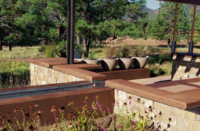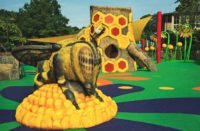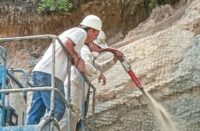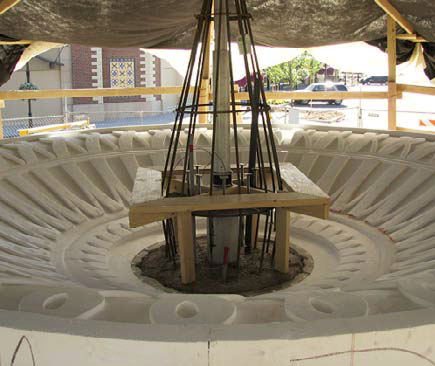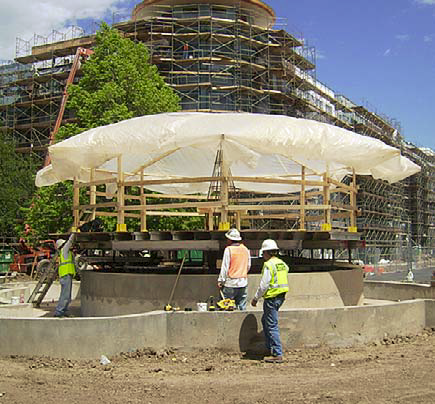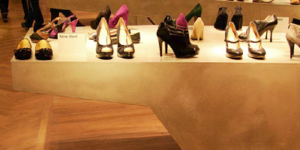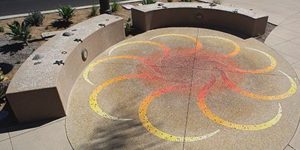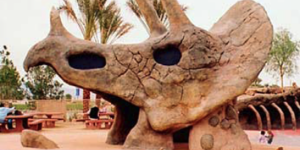The Streets at SouthGlenn, a sprawling new shopping destination in south Denver, boasts a block-long urban park with a brick fireplace, tall “legacy trees,” gardens and cafes, and a centerpiece: a grand, European-style fountain, more than 16 feet tall with four falls.
In the old world, such a fountain would have been carved from stone. In modern-day Colorado, builders used glass-fiber reinforced concrete.
Denver decorative concrete contractor Colorado Hardscapes Inc. constructed the fountain, which includes two elevated concrete bowls and two basins. Edges and patterns were designed to produce a specific water-flow effect, which is fed by 24 jets in a lower basin and another at the top.
Colorado Hardscapes precast the shells of the two bowls monolithically for seamlessness and strength. “When there are cold joints in a water feature, there is greater chance for chemicals, debris, and coins to get lodged into the cracks and with freeze-thaw, cause unrepairable damage and leaks to the bowl,” says Colorado Hardscapes spokesperson Karen Van Heukelem, LEED AP.
Artisans cast the smaller bowl off-site and placed it by crane. But the lower, bigger bowl, 16 feet wide, was essentially precast in place. GFRC materials and methods were used to form and finish the bowl more than 10 feet in the air. “The lower bowl, although precast in nature, was poured in place due to its size being too large to transport,” Van Heukelem says. “This cast-in-place, precast nature makes it a unique feature and first of its kind in the States. We brought the precast shop to site.”
Casting the bowls was a three-step process, starting with ArcusStone, a crushed limestone material that mimics the natural rock when mixed with cement. “It acts just like natural limestone in that it darkens and hardens with age,” Van Heukelem says. The ArcusStone gives the outer face of each bowl a weathered, old-world look with veins and bug holes. The material was colored with ArcusStone’s Champagne 50.
GFRC was applied wet-on-wet inside the ArcusStone, thicker in the center than at the edge. After the shells cured, steel reinforcing and more concrete came next, and a final inner layer of Champagne 50-colored ArcusStone finished the job. “We did the inner bowls colored for the people in the surrounding buildings looking down on the feature,” says Van Heukelem.
The end result recalls aged, polished stone, but with decorative flourishes that go beyond mere rock. Flowers on the outer basin around the feature were precast by Denver-based Nostalgic Stone Inc. and attached wet-on-wet. “Multicolored mosaic tiles in patinated greens and browns project the level of artistic detail found in an aged European fountain,” notes a Colorado Hardscapes news release.
The fountain was completed in August 2009.
www.coloradohardscapes.com
